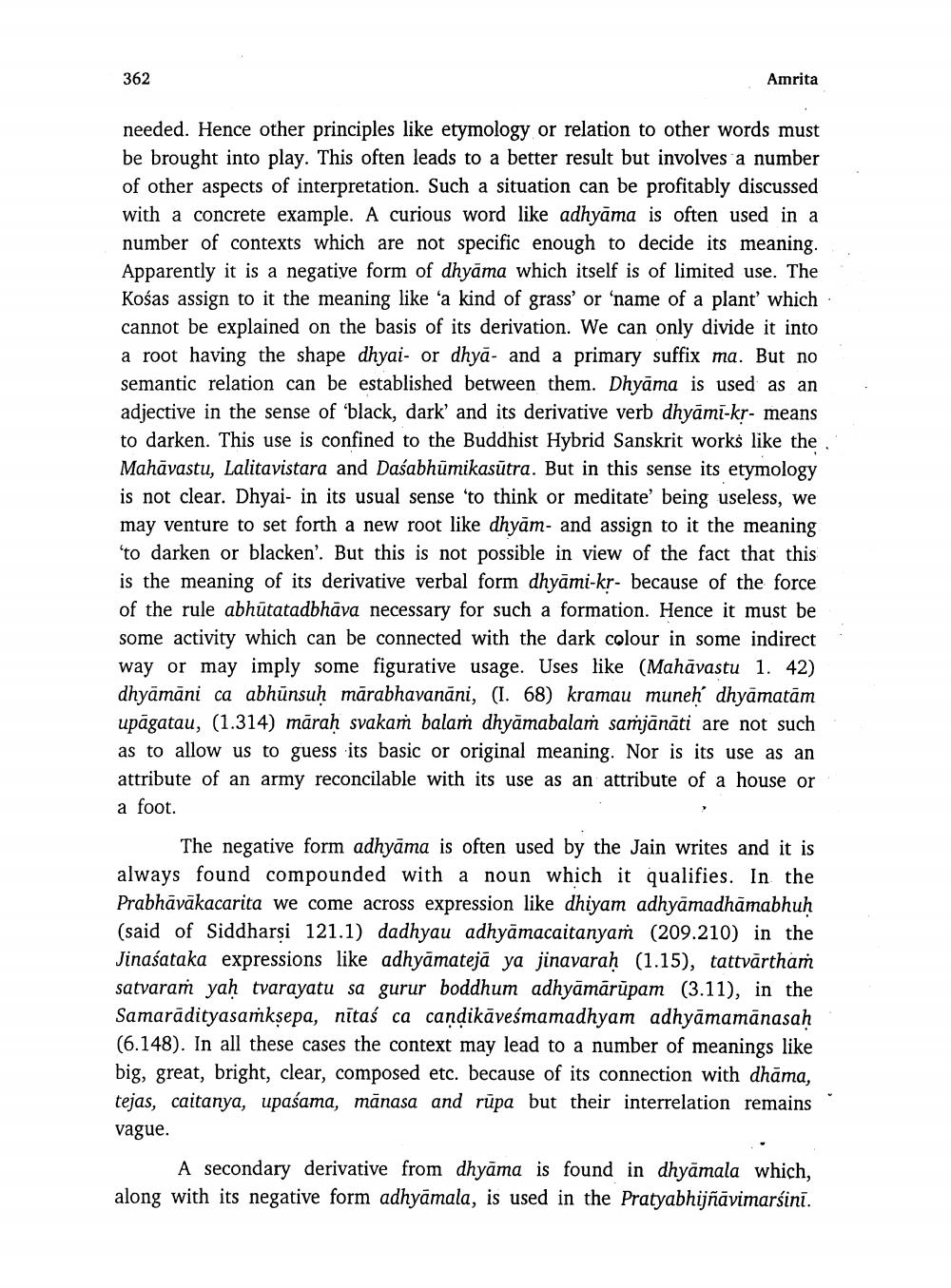________________
362
Amrita
needed. Hence other principles like etymology or relation to other words must be brought into play. This often leads to a better result but involves a number of other aspects of interpretation. Such a situation can be profitably discussed with a concrete example. A curious word like adhyāma is often used in a number of contexts which are not specific enough to decide its meaning. Apparently it is a negative form of dhyāma which itself is of limited use. The Kośas assign to it the meaning like a kind of grass' or 'name of a plant' which cannot be explained on the basis of its derivation. We can only divide it into a root having the shape dhyai- or dhyā- and a primary suffix ma. But no semantic relation can be established between them. Dhyama is used as an adjective in the sense of black, dark' and its derivative verb dhyāmi-kr- means to darken. This use is confined to the Buddhist Hybrid Sanskrit works like the Mahāvastu, Lalitavistara and Daśabhūmikasūtra. But in this sense its etymology is not clear. Dhyai- in its usual sense 'to think or meditate being useless, we may venture to set forth a new root like dhyām- and assign to it the meaning 'to darken or blacken'. But this is not possible in view of the fact that this is the meaning of its derivative verbal form dhyāmi-kr- because of the force of the rule abhūtatadbhāva necessary for such a formation. Hence it must be some activity which can be connected with the dark colour in some indirect way or may imply some figurative usage. Uses like (Mahāvastu 1. 42) dhyāmāni ca abhūnsuh mārabhavanāni, (I. 68) kramau muneh dhyāmatām upāgatau, (1.314) māraḥ svakaṁ balaṁ dhyāmabalam samjānāti are not such as to allow us to guess its basic or original meaning. Nor is its use as an attribute of an army reconcilable with its use as an attribute of a house or a foot.
The negative form adhyāma is often used by the Jain writes and it is always found compounded with a noun which it qualifies. In the Prabhāvākacarita we come across expression like dhiyam adhyamadhāmabhuh (said of Siddharsi 121.1) dadhyau adhyamacaitanyam (209.210) in the Jinaśataka expressions like adhyāmatejā ya jinavarah (1.15), tattvārtham satvaraṁ yaḥ tvarayatu sa gurur boddhum adhyāmārūpam (3.11), in the Samarādityasamksepa, nītaś ca candikāvesmamadhyam adhyāmamānasah (6.148). In all these cases the context may lead to a number of meanings like big, great, bright, clear, composed etc. because of its connection with dhāma, tejas, caitanya, upaśama, mānasa and rūpa but their interrelation remains vague.
A secondary derivative from dhyāma is found in dhyamala which, along with its negative form adhyāmala, is used in the Pratyabhijñāvimarsini.




